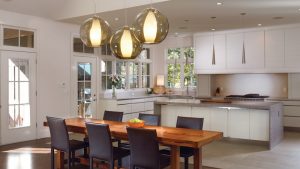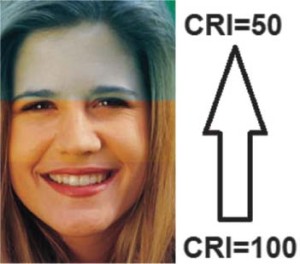Apr 2019
Understanding LED Light Bulbs
Q: It used to be easy to replace a light bulb; now there are so many options, I don’t know what to choose. What do you recommend?
A: It’s hard to imagine a household commodity that has changed more in the last five years than the light bulb. The incandescent bulbs we all grew up with wasted a lot of energy and have been phased out. Government mandates ushered in the brief reign of the more efficient, but widely despised, compact fluorescent bulbs, or CFLs, which emit terrible-quality light and are difficult to dispose of because of their mercury content. The public’s loathing of CFLs accelerated the development of light-emitting-diode bulbs known as LEDs, which now rule the lighting world. These use up to 80 percent less energy than the old incandescents and can last for decades. LEDs are improving all the time and their prices are coming down. However, the quality of light they produce varies significantly, so it’s helpful to understand some lighting nomenclature before you buy.
Most LED bulb boxes have a Lighting Facts label that indicates brightness (measured in lumens), color temperature (labeled K for Kelvin temperature), energy use, estimated energy costs, and expected life. Since most packages also specify the type of incandescent bulb the LED replaces, you don’t need to pay much attention to the brightness measure. Instead, zero in on color temperature: 3,000K is my recommendation for a universally flattering, warm-white light. Anything higher is going to have a cooler, bluish-white cast. Another good measure is the Color Rendering Index, or CRI, which tells you how accurately the bulb renders colors compared to an incandescent bulb, which has a CRI of 100. For LEDs, a CRI of 80 or higher is best.
To ensure an LED will fit in your fixture, bring your old bulb with you to the store and compare the bases. The splayed fins that LEDs have to dissipate heat make them larger than other bulbs. Make sure the bulb is dimmable (you may need to replace your dimmer switches with LED-friendly ones to avoid annoying flickering or buzzing). And if you plan to use the bulb outdoors and/or in an enclosed fixture (some LEDs require more airflow than these lights provide), check that these applications are noted on the box.
If you haven’t already, now’s the time to embrace this new technology — unlike previous innovations, this one is here to stay.
Mar 2014
Why the CRI – Color Rendering Index – Is Important For You
Technical Explanation: The CRI is a unit that measures the ability of a light source to reproduce the colors of objects faithfully in comparison with an ideal source of light, or natural sources such as sunlight. The CRI is a determined value from 0 to 100, with 100 being the value “perfect” or daylight.
Real World Explanation: The CRI determines how you and your surroundings appear to you and the other people in your environment.
Mar 2014
Current Trends in the Lighting Industry
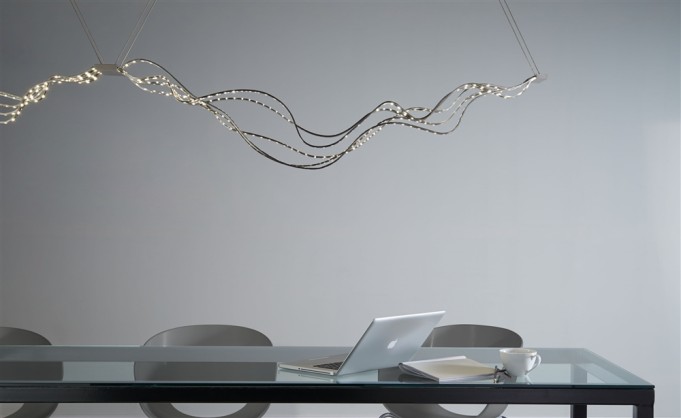
Here is an example of what is happening in the the world of lighting today and what will continue to happen in the foreseeable future. LED’s are all the rage and designers are finding all sorts of new ways to incorporate them into light fixtures. The reasons are clear: LED’s consume far less energy than incandescent light bulbs, LED’s are cool to the touch, LED’s have better color temperature than they did in the past, LED’s have a super long life, and LED’s are small so fixture design can be very creative. In addition to LED fixtures like this one, LED light bulb design is evolving very quickly also. Technicians are finding ways to make them more attractive and more like the good old fashioned incandescent light bulbs. Some of the new LED light bulbs even grow warmer in color temperature as they are dimmed, just like incandescent light bulbs do. Additionally, new, more efficient heat sink materials are being developed which allow LED light bulbs be more streamlined and closer in appearance to both A-lamps and candelabra bulbs. Pretty soon you will be able to use LED bulbs in chandeliers and not notice a difference between them and the candelabra bulbs they replace. Best of all, LED’s are becoming less expensive all the time as manufacturing becomes more efficient and more manufacturers enter the marketplace. As with anything though, I urge you to be careful when buying any LED product as there still are huge quality differences among the myriad of products and producers out there. Try to see the product before you buy it to make sure the color of the light is acceptable to you. I recommend buying dimmable LED light bulbs and fixtures – some LED’s are not dimmable. I also recommend caution in using dedicated LED recessed lighting fixtures. Once you install them they are in the ceiling a long time and the quality of the light might not be satisfactory for you. Instead, consider buying a regular recessed fixture and using an LED light bulb. That way you are not locked in. Please visit our website www.fogglighting.com and like us on Facebook. You also might be interested in the Underwriter’s Laboratory app, LightSmart, which can be downloaded from the App Store. It has all kinds of great information about lighting…and its free.
Mar 2013
Light Sources Part I – LED’s
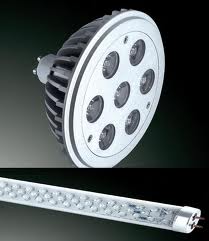
There is a lot of buzz these days in the lighting industry about LED, technically know as Solid State Lighting. Everybody is jumping onto the LED bandwagon. I get emails everyday from manufacturers from the Far East trying to sell me their LED products. Beware, there is a lot of bad LED product in the marketplace. Conversely there is a lot of good LED product available too. Hopefully this posting will enable you to distinguish between the two.
LED is an energy efficient light source that may or may not be dimmable. Check the product information to be sure. It is a product with a long life. Manufacturers claim up to about 27 years under normal operating conditions. The light output degrades slowly over the life of the LED meaning it does not burn out all of a sudden.
An LED is a Light Emitting Diode, a simple type of semiconductor that is similar to semiconductors used in computers. It is a solid material that conducts electrical current. Light is emitted from the semiconductor die which is a chip of semiconductor material treated to create a positive-negative junction. When voltage is applied the current flows from the positive to the negative side and excess energy is emitted as a photon and heat is emitted in the form of conduction. The natural color of the photon is not white. What we see today as LED lights require the LED to be coated with different materials to give white light (as well as many other colors). LED’s are a directional light source by nature. They emit light in one direction. In order for an LED bulb to emit light like an incandescent light bulb reflectors must be used inside the LED capsule. That’s the technical stuff.
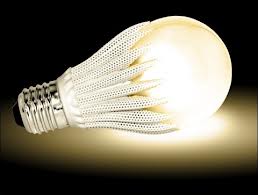 |
| Typical LED replacement light bulb. |
Looking at the picture to the left you will see a typical LED replacement light bulb. Notice the fins on the bottom of the bulb. They serve as the heat sink. This is probably the equivalent to a 40 watt incandescent light bulb. Inside are many individual LED chips arranged in an “array” to product sufficient light output to generate about 800 lumens. The reason you have not seen any 100 watt equivalent LED replacement bulbs is because they have not figured out how to dissipate the heat that would result in generating about 1,600 lumens. Imagine a heat sink twice the size of this one! You could not get the light bulb into the socket.
 |
| Examples of directional and under cabinet LED’s. |
Looking at the photo to the right you will see an example of an LED replacement directional light bulb, probably replacing a PAR30. The fins on the back are the heat sink. Below that is an example of an under cabinet linear LED fixture comprised of many LED chips. They are arrayed in a linear fashion to provide a even distribution of light on a counter top. This type of linear fixture can also be used as cove or toe kick lighting. In my opinion the best residential application today for LED lighting is this type of under cabinet lighting.
There are a few things you should be aware of when considering LED lighting for your home.
First is the cost. The payback period for LED vs incandescent is between 4 to 7 years. LED technology is doubling about every 18 months following Moore’s Law. This means a couple of things for you. First, prices are sure to come down in the next few years. Second, new and better LED products are going to be available in the next few years. Imagine LED technology being like computer technology in the 1980’s. So the question is: Do you wait or do you jump in now, knowing that the product you buy today will be far surpassed in the next few years? Keep in mind that these LED’s will supposedly last for up to 27 years under normal operating conditions and hours. Conversely if everybody had waited for computer technology to improve before jumping in, the technology might have stalled. The benefits of buying LED now, like energy conservation, might outweigh the uncertainty of what future LED technology will be.
The next thing you need to be aware of is quality. There are HUGE quality differences in today’s LED products. These differences could ruin your LED lighting experience if you do not do your homework. LED’s are manufactured by lots of different companies in lots of different factories all over the world. Like everything else some factories have better quality control than others. Individual LED chips have individual properties that distinguish them from each other. Good quality control means that LED’s with the same characteristics are grouped (binned) together. This means the LED’s with the same color qualities and same lumen output should be used to make a fixture or replacement bulb. These will perform as they are rated to perform. Also as with anything else a low price might be a red flag.
Color temperature and CRI (reference my previous posting) are two of the big considerations. If you get an LED with the wrong color temperature it can feel like you are living in a parking garage. If you get one with poor CRI you will be very disappointed about how items in your home look. Maybe the drapes on your windows will look green instead of orange. Remember CRI should be in the mid-80’s and color temperature should be around 3000K for relaxing light.
Lighting in your home is a big deal. My advice would be to try LED and see how you like it before going all in, and get the best you can afford.
Please visit my website, fogglighting.com, and email me with any questions. I do not have all the answers, but I know where to get them.

